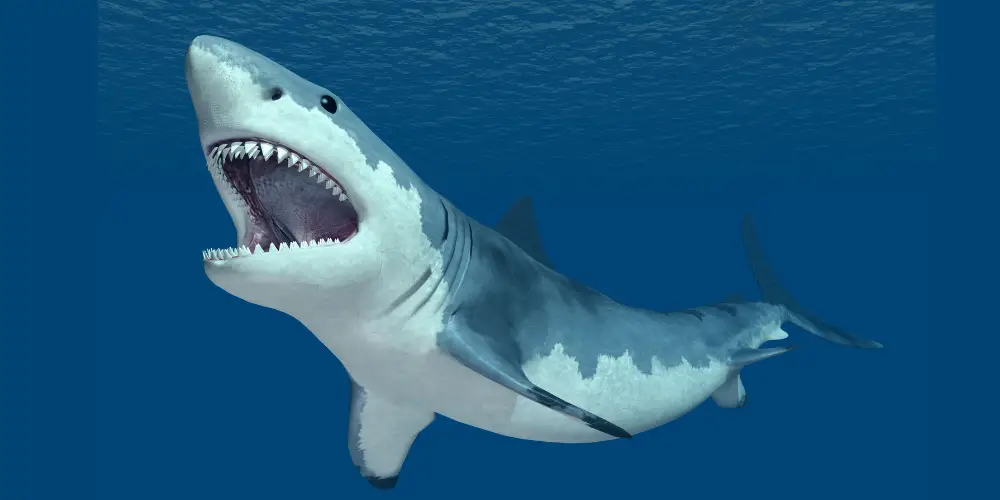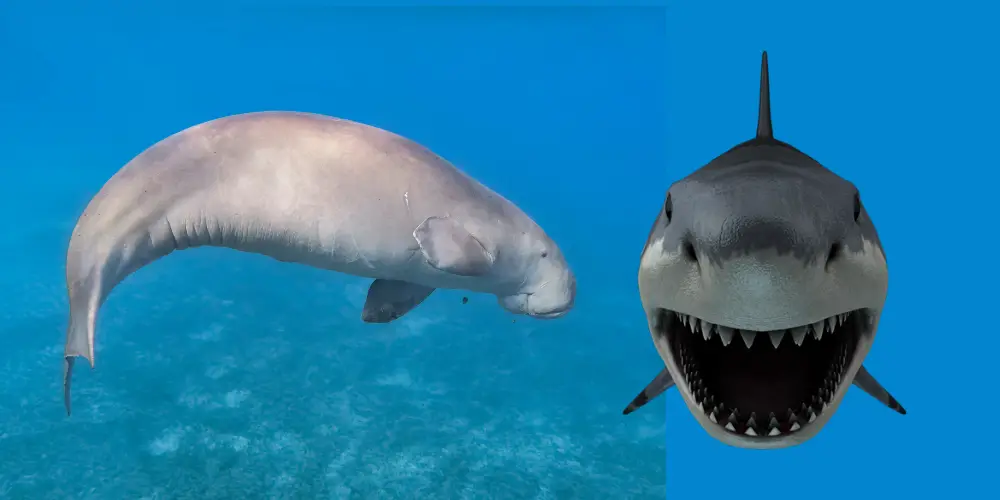Visiting an aquarium, you might expect a scene ripped from a nature documentary: a fierce shark hunting down its prey with relentless precision.
Yet, you often see the opposite – sharks seemingly at peace with their tank mates, the smaller fish swimming by unharmed. It’s a scene that sparks curiosity: Why do sharks in aquariums not eat the fish?
Sharks in aquariums do not eat the fish. Sharks in aquariums are generally well-fed, which reduces their natural hunting instincts. They are often target-trained to associate food with specific signals, and the presence of regularly fed, healthy fish in the aquarium may not trigger their predatory behavior.
Key Takeaways
- Sharks in aquariums don’t eat other fish due to well-managed feeding routines that suppress their natural hunting instincts.
- Aquariums use target training and controlled feeding to acclimatize sharks and reduce predatory behavior.
- Strategic diet management ensures sharks receive nutritionally balanced meals, minimizing competition with tank mates.
- Regular feedings reduce aggression among sharks and other fish, promoting peaceful coexistence.
- Selecting tank mates based on factors like speed, agility, and defense mechanisms helps prevent sharks from preying on them.
- Aquarium design, including zoning and escape routes, is crucial for maintaining harmony among different species.
- Training programs in aquariums teach sharks to associate targets with food, reducing aggressive feeding tendencies.
- Understanding sharks’ metabolic rates and growth phases is essential for appropriate feeding and care.
- Monitoring sharks’ behavior and health is vital to ensure their well-being in captivity.
- Stress management, through environmental control and social groupings, is key to influencing sharks’ feeding behaviors.
- Sharks exhibit intelligence and social dynamics, including problem-solving abilities and establishing social hierarchies.
- The morality of keeping sharks in captivity is debated, balancing educational value against the need for space and freedom.
- Handling predatory incidents involves thorough reviews and protocol adjustments to enhance aquarium safety.
Understanding Sharks’ Natural Predatory Instincts
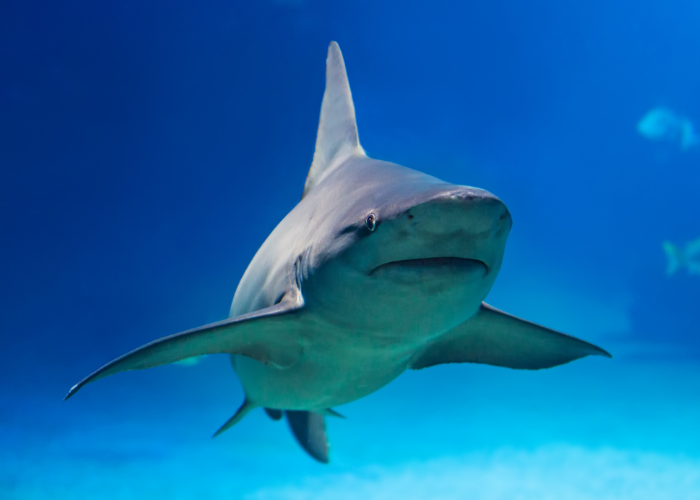
Sharks, the undisputed masters of their marine domain, are engineered for hunting.
With their streamlined bodies and rows of razor-sharp teeth, they’ve been the ocean’s apex predators for eons.
However, within the confines of an aquarium, the dynamics change drastically. Here’s why:
- Instinct vs. Environment: A shark’s instinct is to hunt, but the environment of an aquarium doesn’t necessitate this behavior for survival.
- Controlled Feeding: Unlike in the ocean, aquariums provide scheduled feedings, reducing the need for sharks to hunt.
The Process of Acclimatizing Sharks to Aquarium Life
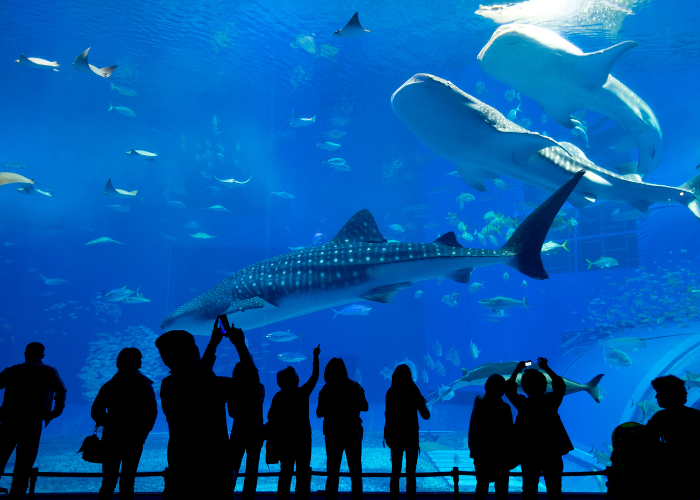
Acclimatization is key when introducing sharks to an aquarium. This process involves:
- Quarantine: New sharks are often quarantined to monitor their health and gradually adjust to the new water conditions.
- Introduction to Tank Mates: Sharks are introduced to potential tank mates in controlled scenarios to observe interactions.
Strategic Diet Management for Captive Sharks
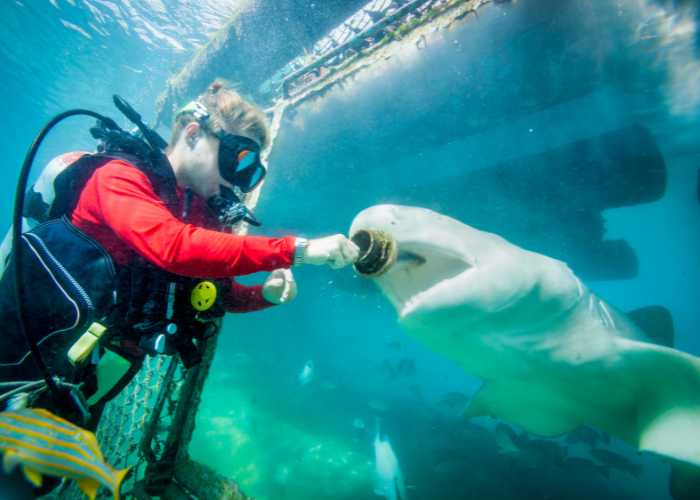
Aquariums employ a strategic approach to feeding sharks, which includes:
- Portion Control and Nutritional Balance: Each meal is carefully portioned and balanced to meet the sharks’ dietary needs.
- Feeding Techniques: Divers often hand-feed sharks to ensure they receive food without competing with other fish.
How Regular Feedings Influence Behavior
The routine of regular feedings plays a significant role in shark behavior:
- Reduction in Aggression: Constant access to food reduces competition and aggression among sharks and between sharks and other fish.
- Behavioral Enrichment: Feeding can be used as a form of enrichment, providing mental stimulation for sharks.
Selective Tankmate Choices to Prevent Conflict

Aquariums must be thoughtful in their selection of tank mates for sharks. Considerations include:
- Speed and Agility: Nimble and quick fish often evade sharks, making them less likely to be preyed upon.
- Camouflage and Defense: Some fish have evolved with patterns and defenses that discourage predation.
Tank Design for Peaceful Coexistence
The design of the aquarium habitat is tailored to reduce stress and conflict. This includes:
- Zoning: Different species are given their preferred zones in the tank, whether it’s the open water, the bottom, or among the coral.
- Escape Routes: Multiple escape routes and hiding places offer refuge for smaller fish.
Training Sharks Away from Predatory Actions
Training is a crucial component in managing sharks in aquariums. This often involves:
- Target Feeding: Sharks learn to associate a target with food, reducing aggressive feeding behavior.
- Positive Reinforcement: Rewards are given for calm behavior during interactions with humans and other fish.
The Biology of Shark Appetites
Understanding a shark’s biology is essential for proper feeding. Aspects include:
- Metabolic Rate: Cold-water sharks have slower metabolisms and may need less food than warm-water species.
- Growth Phases: Young, growing sharks might require more food than adults.
The Importance of Constant Monitoring and Interaction
Vigilant monitoring ensures the well-being of all aquatic life in the aquarium. This includes:
- Behavioral Observation: Staff watch for changes in behavior that could indicate stress or illness.
- Health Checks: Regular health assessments are conducted to ensure the sharks are in top condition.
Managing Stress to Influence Feeding Behaviors
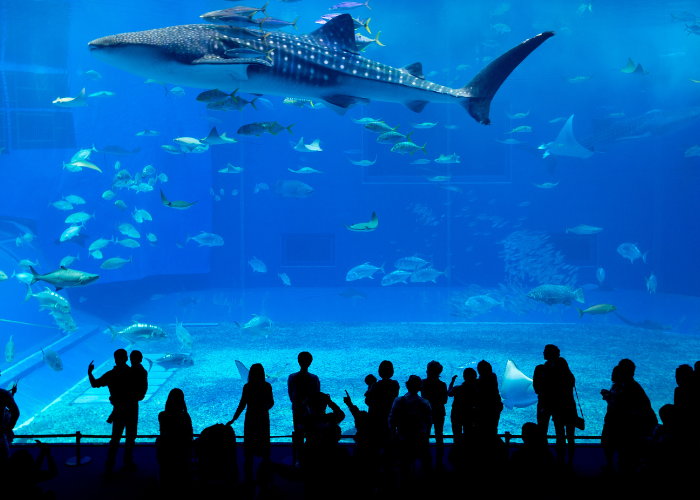
Stress management is a top priority for aquariums, with techniques such as:
- Environmental Control: Maintaining optimal lighting, water temperature, and cleanliness.
- Social Groupings: Keeping sharks with compatible species to prevent social stress.
Shark Intelligence and Social Dynamics in Aquariums
Sharks are more than just eating machines; they display signs of intelligence and social structures. Interesting findings include:
- Problem-Solving Abilities: Sharks can learn to navigate mazes and solve problems to obtain food.
- Social Hierarchies: Sharks often establish a pecking order within their group, which can influence feeding and behavior.
The Morality of Keeping Sharks in Captivity

The ethics of keeping sharks in aquariums is a hotly debated topic. Points of contention include:
- Space and Freedom: Critics argue that large, roaming sharks need more space than an aquarium can provide.
- Educational Value: Proponents point out the invaluable role of aquariums in education and conservation.
Handling Predatory Incidents
Despite best practices, there are times when a shark’s predatory nature surfaces. These incidents are examined to improve care, such as:
- Incident Reviews: Each event is thoroughly reviewed to understand triggers and prevent recurrence.
- Protocol Adjustments: Care protocols are adjusted based on findings to enhance safety for all aquarium inhabitants.
Final Thoughts

By unraveling the complexities behind why sharks in aquariums do not eat the fish, we gain a deeper appreciation for these magnificent creatures.
We also had an insight into the delicate balance required to maintain peace within the microcosm of an aquarium.
If you’re intrigued by sharks and want to explore more about their world, here are some enlightening reads:
And to explore further into shark behavior:
Remember, every visit to an aquarium is an opportunity to learn and contribute to the conservation of these incredible species.
So next time you’re there, take a moment to observe, ask questions, and marvel at the intricate dance of predator and prey living in harmony.
REFERENCES:
- City of Albuquerque. (n.d.). SHARKS At the ABQ BioPark Aquarium Teacher Resource Guide. http://www.cabq.gov/artsculture/biopark/documents/Shark%20Teacher%20Resource%20Packet.pdf
- OdySea Aquarium. (n.d.). Why Don’t Aquarium Sharks Eat the Other Fish? [Video]. YouTube. https://www.OdySeaAquarium.com
- University of Florida, IFAS Extension. (n.d.). Marine Hobbyist—Common Captive Sharks. EDIS. https://edis.ifas.ufl.edu/publication/FA179


